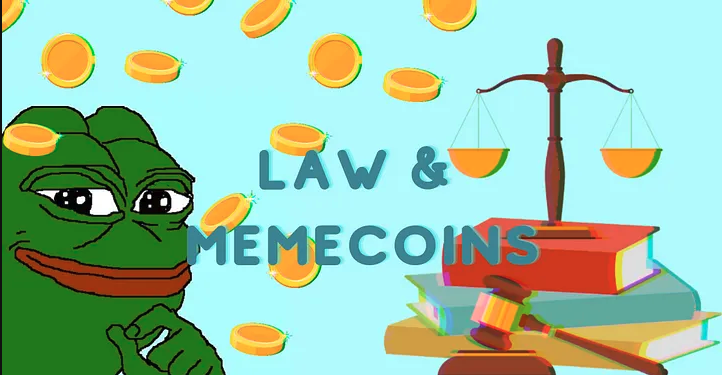Wen Moon? Wen Lambo? Wen Listing?
Ah, the wild world of Web3 — a place where fortunes can be made or lost in the blink of an eye. For many, the thrill of the chase is what keeps degens coming back, while others simply can’t resist the FOMO of not being there for the experience. Amidst the roller coaster of recent markets, new technology has emerged to reel in the chaos and provide the same value granted to traditional assets, but for Web3: legal protection and enforceability of contracts.
Before diving into that, it’s crucial to recognize the nature of most Web3 assets. The recent surge of Pepe Coin ($PEPE) and its staggering $1.2 billion market cap, underscores the substantial liquidity sitting on the sidelines, waiting to be deployed into crypto assets, which are mostly speculative. This phenomenon has also revealed the decline of more standard Web3 items, such as NFTs. As floor prices have dwindled over the last year, many have questioned their worth. as laymen often joke that there is no value in purchasing an NFT because they can just right-click-save the image. In most cases, they are right.
Smart money has shifted its focus from memecoins and your standard 10k PFP collection to investing in IP rights of projects and 1/1 art, allowing them to build brands while tapping into the community and liquidity that comes with blockchain markets. Traditional venture capitalists (VCs) have the resources and legal teams to create these Web2-style deals to invest in IP rights and fine art NFTs, locking in tangible legal protections and investment value that the average Web3 investor cannot achieve.
For them, the hassle is worth it, because art and intellectual property (IP) rights are worth billions of dollars for top brands like Gucci, Nike, and Ferrari, and similarly for a Jackson Pollock, Picasso, or Monet. Web3 has the same potential for profit; however, it is difficult and expensive to protect the value of IP in the space. For example, companies like Yuga Labs have been fighting to protect their IP for months in courts over copyright infringement.
New technology, such as JTC Ordinals and the Jurat blockchain, offers on-chain legal remedies and IP protection for NFTs and tokens, providing the benefits that traditional investors seek without having to spend thousands in court fees. This technology allows all users to invest in digital assets, knowing they have enforceable legal rights to safeguard their investments. For artists publishing on the Jurat blockchain, this means their art is no longer just a speculative asset — it’s a real, legally backed asset that they can license or sell. And for traditional commerce, the Jurat blockchain can enable on-chain inscription of property deeds, small business contracts, or car titles to be inscribed and protected, opening up a new world of possibilities.
While your grandmother might not be ready to make this jump into Web3, most of the crypto market is poised for this transition. With a global market cap of $1.3 trillion, the crypto space is still very much alive and has the potential to adopt this technology. Over 420 million users have crypto wallets, demonstrating an engaged and ready-to-invest userbase. If just a fraction of these users were to invest in legally backed assets and IP, much like they did with memecoins, there would be the potential to revalue the market and set a new standard for what benefits digital assets should include.
Take, for example, the recent NFT drop by Alpha Centauri Kid, which generated over 600 ETH in primary sales and now has a floor price of 14 ETH. The ability to generate that much value, in this bear market, is shockingly impressive. Now, imagine if those piano pieces had baked-in legal rights? If they were lost due to fraud or theft, collectors would be able to get them back. Even more so, ACK could guarantee royalties be paid on-chain, curtailing efforts by marketplaces to only collect the first 0.5% fee. Through court connectivity on the Jurat network, assets become not only safer but more powerful.
As the industry evolves, more users are looking for tangible assets backed by solid legal frameworks. The development of JTC Ordinals and the Jurat blockchain has created an opportunity for on-chain legal remedies, opening the doors for users and investors of all sizes to participate in the growing Web3 economy. This shift has not only given power to the average Web3 user but has also allowed artists and creators to unlock new value in their works. With the potential to inscribe various types of assets on the blockchain, we could be on the cusp of a new era of commerce.
If you are interested in joining this journey, mint a JTC Ordinal yourself.
Visit: https://jurat.io/ordinals/ to learn more.



